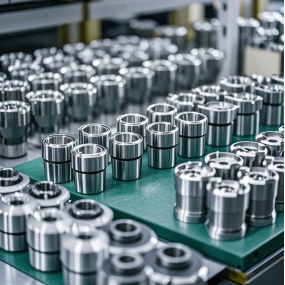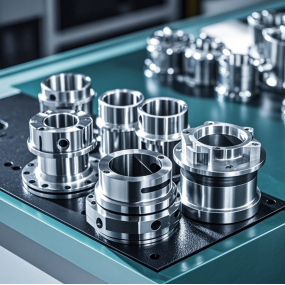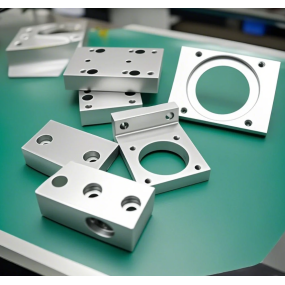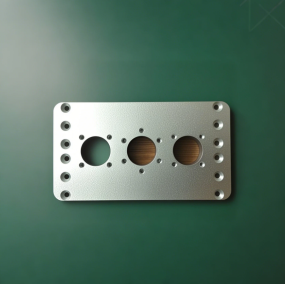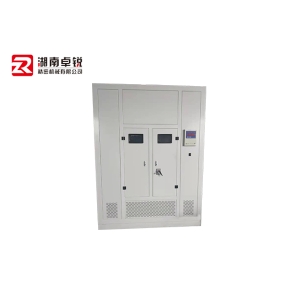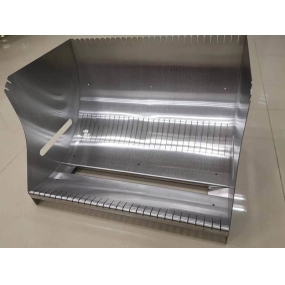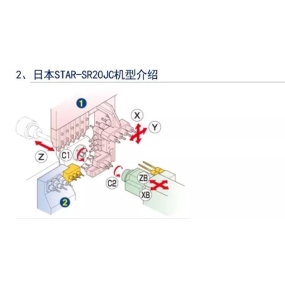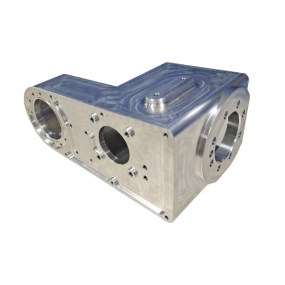Sheet Metal Processing is a key link in the metal material processing industry chain, which has long been widely used in various fields. In the laser cutting processing process, there are no more than fiber laser cutting, plasma cutting, numerical control flame cutting, hydraulic shearing machine, stamping die and other more commonly used methods. And fiber laser cutting is an emerging technology. In the laser cutting of sheet metal materials, laser cutting can be carried out, from microfiber sheet to thick steel plate. The key principle of fiber laser cutting is to use high-power and high-density lasers to directly cut the raw materials, so that the raw materials are quickly heated to a very high temperature, reaching the gasification temperature of the raw materials, and producing holes. When we move the light, along with the movement of the light, the eyelets of the raw materials are also changing, and the eyelets continue to produce a total width and narrow incision, completing the process of laser cutting raw materials. The advantages are high efficiency, high energy density, and strong flexibility. In terms of precision and efficiency, fiber laser cutting is the best choice for laser cutting sheets in the sheet metal industry. Sheet metal processing and cutting refers to cutting the sheet with a pair of circular shears with opposite rotation directions. According to the configuration, it can be divided into three types: straight plate configuration, inclined plate configuration and inclined plate configuration. The straight matching plate is suitable for cutting the plate into strips or cutting the square embryo into a round embryo, the oblique matching plate is suitable for cutting the ring embryo or the inner hole of the circle, and the oblique matching plate is suitable for cutting the embryo of any curve gallery. The installed oblique cutting machine is widely used in the cutting of curved plate with gallery. Install the upper and lower milling cutters before pasting the plate. Then adjust the speed ratio and hob clearance according to the thin thickness of the sheet. When selecting the straight sticking plate, install the upper and lower end milling cutters in the center of the vertical axis, or set the left and right end milling cutters to slightly overlap. The angle of the embryo is limited when the oblique shear strip is selected, and the small angle is related to the diameter of the shearing blade and the thickness of the half material, while the total width error is also limited when the parallel strip is rolled.
Hello! Welcome to EMAR's website!
 English
English » »
» »
 Spanish
Spanish Arabic
Arabic French
French Portuguese
Portuguese Belarusian
Belarusian Japanese
Japanese Russian
Russian Malay
Malay Icelandic
Icelandic Bulgarian
Bulgarian Azerbaijani
Azerbaijani Estonian
Estonian Irish
Irish Polish
Polish Persian
Persian Boolean
Boolean Danish
Danish German
German Filipino
Filipino Finnish
Finnish Korean
Korean Dutch
Dutch Galician
Galician Catalan
Catalan Czech
Czech Croatian
Croatian Latin
Latin Latvian
Latvian Romanian
Romanian Maltese
Maltese Macedonian
Macedonian Norwegian
Norwegian Swedish
Swedish Serbian
Serbian Slovak
Slovak Slovenian
Slovenian Swahili
Swahili Thai
Thai Turkish
Turkish Welsh
Welsh Urdu
Urdu Ukrainian
Ukrainian Greek
Greek Hungarian
Hungarian Italian
Italian Yiddish
Yiddish Indonesian
Indonesian Vietnamese
Vietnamese Haitian Creole
Haitian Creole Spanish Basque
Spanish Basque


